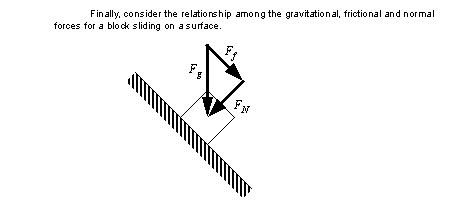
Through the use of the Core Motion framework, we are able to accesswith great ease a variety of hardware built into our iOS device in order to acquire such unique information, from magnetic fields, to accelerations, both by gravity and otherwise, to rotation rates, about the specific situation of our device. In the experiment the value of g will be determined using this fact. One of the most obvious (and the weakest. The acceleration due to gravity is found by determining the slope of the velocity.

Therefore, to impart an acceleration to an object, one must impart a force. F m a (1) or force mass times acceleration. Acceleration due to Gravity is the acceleration due to the force of gravitation of the earth. It is known as acceleration due to gravity. This numerical value is so important that it is given a special name. Theory: In its simplest form, Newton's law of force relates the amount of force on an object to its mass and acceleration. Such an object has an acceleration of 9.8 m/s/s, downward (on Earth). Remember to use the appropriate rules for uncertainties. This could be anything from simply detecting the orientation of the device to incorporating rotation into a racing game’s steering system, to using an accelerometer to measure the acceleration of a roller coaster. investigate the acceleration due to the force of gravity. Determine the acceleration due to gravity with uncertainty for each ball. world, a developer can specifically build applications focused on enhancing the user’s experience based on his or herphysical situation. By retrieving information about the outside. Now, we will deal with an entirely opposite topic: data from the outside world-not in the sense of data given by the user, but instead, data collected by the device about the universe in which it exists at any given second. © 2020 American Association of Physics Teachers.The last two chapters spent an incredible amount of time on dealing with information stored and persisted inside a device’s memory.The direction of g is down, towards Earth’s center and it’s magnitude is approximately. We thank Thomas Flanagan, who found the tape timer frequency was (40.05 ± 0.13) Hz using a power spectrum analysis of the audio signal. Segre Janu1 Introduction It is well known that if the effects of air resistance are ignored, any object dropped in the vicinity of Earth’s surface will move with constant acceleration g. Record the length of the pendulum in the table below. Melton, “ Inexpensive science teaching equipment,” Sci. Measure the length of the pendulum from top to the middle of the bob of the pendulum.You will also use your measurement of g to find the earths mass. You will get practice in collecting and interpretting data and estimating uncertainty.

Like you did in step 2, you can use the constant acceleration. In this lab, you will measure g, the acceleration due to gravity on earth. Ogborn ( IOP Press, Bristol and Philadelphia, 1994), p. Part 1: Measure your height Use the distance that the ruler fell to determine your reaction time. Use what you know about forces and motion, patterns, and rates of change to design and carry out an experiment to determine the relationship between mass and. Jardine, in Wonder and Delight: Essays in Science Education in Honour of the Life and Work of Eric Rogers 1902–1990, edited by B. Watson, Project Physics Handbook ( Holt, Rinehart and Winston, New York and Toronto, 1975), Unit 1, pp. Sunday 10:00 am Oran Park Public School Hall 390 South Circuit, Oran Park NSW 2570.

Earth, by timing how long a frictionless. Hoeppner, “ Apparatus for Teaching Physics: Improved regularity ticker tape timers,” Phys. The aim of this experiment is to measure the value of g, the acceleration of gravity at the surface of the. Walter, Laboratory Guide PSSC Physics, 4th ed.


 0 kommentar(er)
0 kommentar(er)
